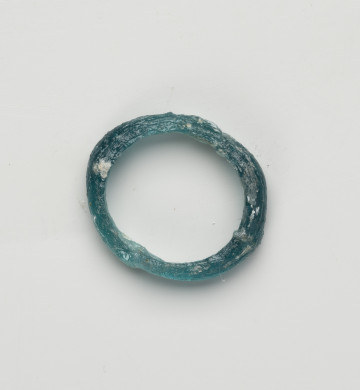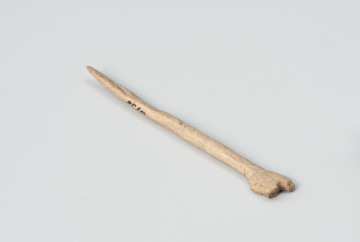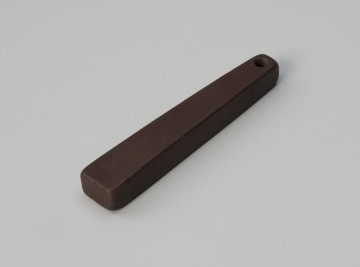
Glass ring
970 — 1250
National Museum in Szczecin
Part of the collection: Middle Ages
Archaeological finds of casting moulds, crucibles, casting nozzles and lumps of raw material attest to the processing of non-ferrous metals. Reusable moulds made of clay or soft rock materials (sandstone, or soapstone or soapstone) were used to make serial casts of small objects, usually ornaments. For example, a stone form with a preserved unfinished temple ring is known from archaeological research in Szczecin. Ornaments with floral motifs were cast in a single mould discovered in a burial ground in Laska on the island of Wolin. The production of the desired object began with the carving of a matrix in a plate or lump of rock. The liquid metal heated in the casting crucible was transferred from above the fire with casting tongs and poured into the mould. Once solidified, the cast object had to undergo post-processing – removal of lint, casting seams, cleaning and polishing. Foundry work is one of the oldest methods of processing non-ferrous metals, known for millennia, i.e. since the Bronze Age, which began in Poland around 1700 BC. Anna Bogumiła Kowalska
Author / creator
Object type
casting mold
Technique
curving (engraving), smoothing
Material
stone
Creation time / dating
Creation / finding place
Owner
Muzeum Narodowe w Szczecinie
Identification number
Location / status

970 — 1250
National Museum in Szczecin

800 — 1200
National Museum in Szczecin

800 — 1200
National Museum in Szczecin
DISCOVER this TOPIC
Museum of King Jan III's Palace at Wilanów
DISCOVER this PATH
Educational path